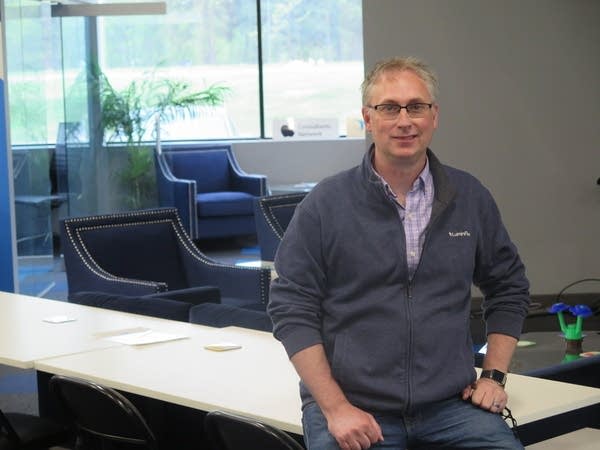Businesses seek improved indoor air quality for returning workers

Go Deeper.
Create an account or log in to save stories.
Like this?
Thanks for liking this story! We have added it to a list of your favorite stories.
Building ventilation systems bring in lots of outdoor air, but they aren't designed to rely exclusively on fresh air. Instead, it’s a balancing act: filtering and conditioning inside air while replacing some of it with outside air.
Fine-tuning it all is the challenge facing many businesses, including Twin Cities software company LuminFire.
Its space is ultra-modern and open plan — couches and bistro tables abound, while cubicles are scarce.
But CEO Tim Cimbura says the welcoming space has been largely empty because of the pandemic. Most LuminFire employees have been working from home. Cimbura wants them back, in person, crafting ways to help companies increase efficiency.
Turn Up Your Support
MPR News helps you turn down the noise and build shared understanding. Turn up your support for this public resource and keep trusted journalism accessible to all.
“Something magical happens when people are actually meeting face-to-face,” Cimbura said.
To help facilitate that, Cimbura spent $5,500 on an industrial-scale air filtration machine to augment the conventional ventilation system in his building.
The machine itself is on wheels, about half the size of a refrigerator and able to move from one area to another. Its primary component is a high-efficiency particulate air — or HEPA — filter, and it operates on standard 110 power.
“It’s an investment we made in the health of our employees and the health of potential clients. When they come in and they see that this unit is here, they just know that we care about them,” said Cimbura.
St. Paul-based ISO-Aire built the unit Cimbura bought.
“More and more places needed this technology to make the places safe again and for people to feel safe again coming into work,” said ISO-Aire sales and marketing manager Kevin Albers.
“We work with hospitals, schools, businesses — so that’s how we got exposed to this because one of our leading health care customers came to us,” he said. “They needed help for an isolation room application, and we came up with this.”

Albers says his company’s technology is a good solution for businesses with heating and cooling systems that can’t handle HEPA grade filtering or exchange enough outside air with inside air.
Amy Satterfield is also in the air handling business. She works for a company called the Institute for Environmental Assessment and says many businesses are trying to figure out the best approach to improving air quality.
“There is a lot of confusion, and it’s really hard for people to navigate what is the right path,” Satterfield said.
Satterfield does not sell filtering or air exchange products. She consults businesses and schools on ways to improve air handling. She says the first place to start is what’s already in place.
“There’s a lot of facilities with really great systems that just need to be verified and checked, and there are a lot of systems that are maybe installed incorrectly,” Satterfield said.
Dan Tranter, the indoor air supervisor for the Minnesota Department of Health, agrees: a thorough inspection is a good idea.
“See what is going on with the system. Is it working properly currently?” he said.
Tranter says looking for ways to increase airflow is also a good idea.
He and Satterfield agree that many systems cannot handle the strain of high-efficiency filters. Their blowers aren’t powerful enough and can burn out. Sometimes those filters simply block air from entering. Both say portable filters such as those sold by ISO-Aire can be effective.
Tranter warns, though, that the market is flooded with companies offering air disinfection systems. He says businesses need to do their due diligence to make sure they get what's right for them.
Tranter has long been focused on clean air and says the way the pandemic has more people thinking about air quality is a good thing.
“We kind of tend to take for granted the air we’re breathing, and now there’s a little more attention on this issue,” said Tranter.



